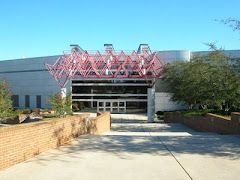They hover from the prospective admissions stage to graduation and the job market beyond—contacting presidents of universities, deans, and professors, disputing their child’s grade; requesting an extension for their child; complaining their child does not receive as much praise as the parent would like; completing assignments for their child; requesting notification of grades their child received; and even attending job fairs and interviews with their child (Vinson, 2006, p. 423)
Whether checking on an overdue fine or performing research on their behalf, it is not the parent’s place to interfere with the process of growing up. We must trust in our youth, as well as our parenting skills, by allowing our children to make mistakes or good decisions towards their future. If we do not allow them to learn on their own, we may find ourselves holding their hands throughout adulthood. I refuse to financially support my son for the rest of my life! I fear that will be the result, if I do not allow him to experience life as an independent young adult. “While the link between parenting effort and wellbeing of children has been firmly established, contemporary discussion has proposed that extreme levels of parental protection of and responsiveness to children could be counterproductive” (Locke et al., 2012, 249). Remember that there are laws to protect the student and we must adhere to them. When all else fails, one can always lean on FERPA (the Family Educational Rights and Privacy Act) to “protect the privacy of student education records. The law applies to all schools that receive funds under an applicable program of the U.S. Department of Education. These rights are granted to the student when he or she reaches the age of 18 or attends a school beyond the high school level (FERPA, 2006).
References
United
States Department of Education. (2006). Family Educational Rights and Privacy Act (FERPA).
ED.gov. Retrieved from ED.gov on July
24, 2013 at
Locke, J. Y.,
Campbell, M. A., & Kavanaugh, D. (2012). Can a Parent Do Too Much for Their
Child? An Examination By Parenting Professionals of the Concept of
Overparenting. Australian Journal of
Guidance & Counseling, 22(2), 249-265.
Vinson, K.
(2013). Hovering Too Close: the Ramifications of Helicopter Parenting in Higher
Education. Georgia State University Law
Review, 29(2), 423-451.








